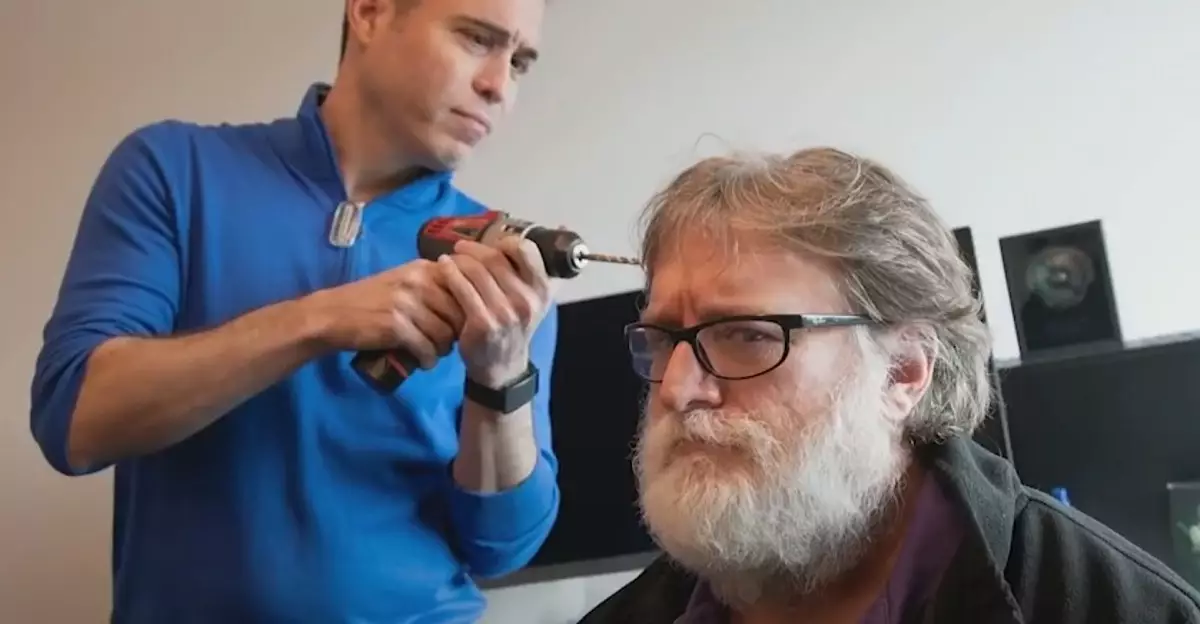In the ever-evolving landscape of neurotechnology, the advent of innovative approaches to brain-computer interfaces (BCIs) is generating excitement and speculation. One particularly intriguing initiative comes from a stealth startup known as Starfish Neuroscience. Contrary to the industry norm of large, singular implants, Starfish proposes a bold idea: utilizing multiple smaller brain implants to enhance connectivity and functionality. This pioneering perspective opens up new avenues for treating neurological conditions while simultaneously inching closer to the long-held dream of a direct brain-to-computer link.
The Vision Behind Starfish Neuroscience
Founded by Gabe Newell, the co-founder of Valve, Starfish Neuroscience represents an intersection of gaming, technology, and biomedical innovation. Newell’s past explorations of psychological responses during gaming sessions have laid the groundwork for this groundbreaking endeavor. For those who aren’t aware, Valve itself has been dabbling in virtual reality and the synergy between human cognition and gaming for some time. With the establishment of Starfish, Newell is making a decisive move towards harnessing neurotechnology in ways that could redefine the human experience with machines.
The initial offering from Starfish is a custom electrophysiology chip, which is designed to record brain activity and provide stimulation for therapeutic purposes. Importantly, this technology isn’t constructed to be a complete implant just yet; rather, it serves as a foundational step towards more complex integrative systems, suggesting the company is taking a cautious but insightful approach—one grounded in thorough research and collaboration.
The Technological Edge: Smaller and Smarter
Starfish’s electrophysiology chip distinguishes itself through its impressive specifications. With a size of just 2 x 4mm and a power consumption of only 1.1 milliwatts, it is designed to be unobtrusive. The ability to access multiple brain regions simultaneously could transform treatment protocols for various neurological disorders. By avoiding the need for a bulky battery—a common drawback in many existing devices—Starfish aims to mitigate a substantial barrier to the practicality of brain implants.
What’s especially compelling about Starfish is its vision for wireless power transfer, which could streamline the technology into everyday use without the cumbersome logistics associated with battery management. This could not only extend the lifespan of the device but also enhance the patient’s quality of life, enabling seamless interactions with technology in various environments.
Comparative Analysis with Competitors
For context, consider Neuralink, another player in the neurotech arena, which has implanted devices in human subjects with promising results, though not without complications. Neuralink’s device features over a thousand electrodes and a more complex architecture, but its more substantial size and dependency on periodic recharging raise questions about long-term usability. The decisions made by Starfish to develop smaller, multiple implants may provide a more flexible and practical solution.
As noted by Starfish’s neuroengineer Nate Cermak, the dynamic between different brain regions is crucial in addressing conditions such as Parkinson’s disease, where traditional single-region treatments may fall short. The company’s promise to explore this empirical avenue could position it as a frontrunner in the burgeoning field of sophisticated neurological care.
Beyond Implants: A Holistic Approach to Neurointegration
Starfish’s aspirations extend beyond brain implants alone. The company is reportedly developing a precision hyperthermia device designed to target tumors through controlled heating, as well as a system for brain-guided transcranial magnetic stimulation (TMS) that aims to address mental health challenges like depression and bipolar disorder. This broad perspective highlights a commitment to a holistic approach towards neurotechnology that considers the variety and complexity of human brain function.
Such interdisciplinary advancement resonates with a growing consensus in the medical community that neurological disorders often stem from complex interactions between different areas of the brain. By focusing on multi-faceted solutions, Starfish stands to pioneer novel treatments that go beyond the limitations of current approaches.
The Road Ahead: Collaboration and Innovation
Looking forward, Starfish’s strategy indicates an openness to collaboration as it seeks partners to propel their innovations forward. This collaborative ethos could enhance their research and result in a leap in practical applications, challenging conventional methodologies observed in neurotechnology. With anticipated chip availability set for late 2025, excitement builds regarding the potential to revolutionize treatment paradigms.
Ultimately, we find ourselves on the cusp of a transformative era in neurotech—a period where multiple simultaneous brain implants could redefine our interaction with technology. Starfish Neuroscience, under the guidance of visionary leaders, may very well be at the forefront of this revolution.

